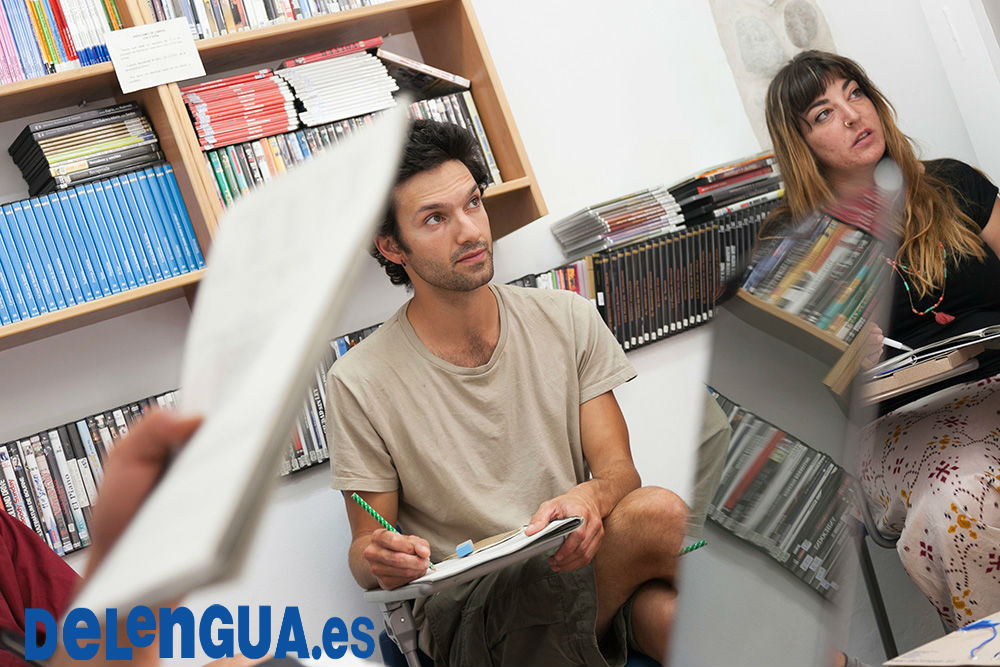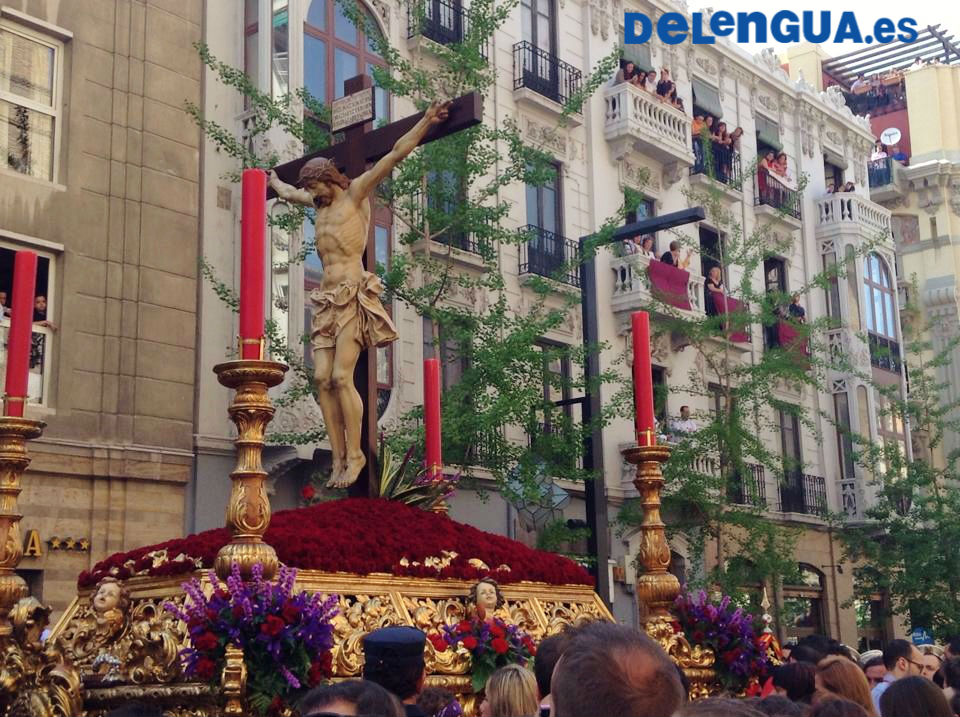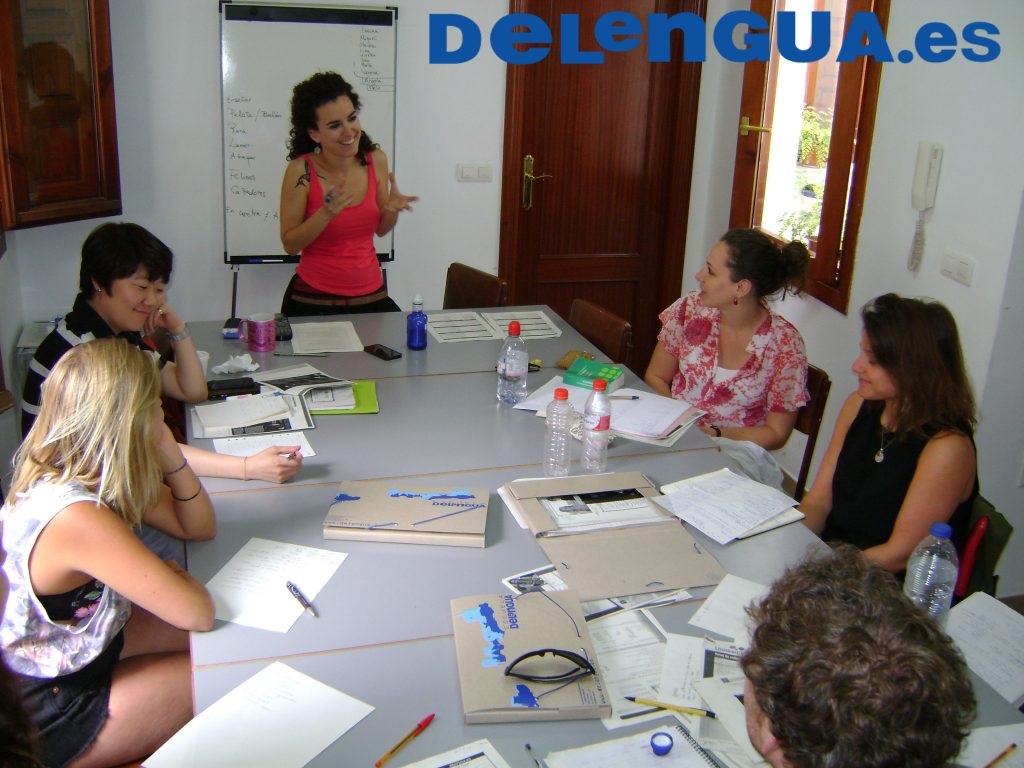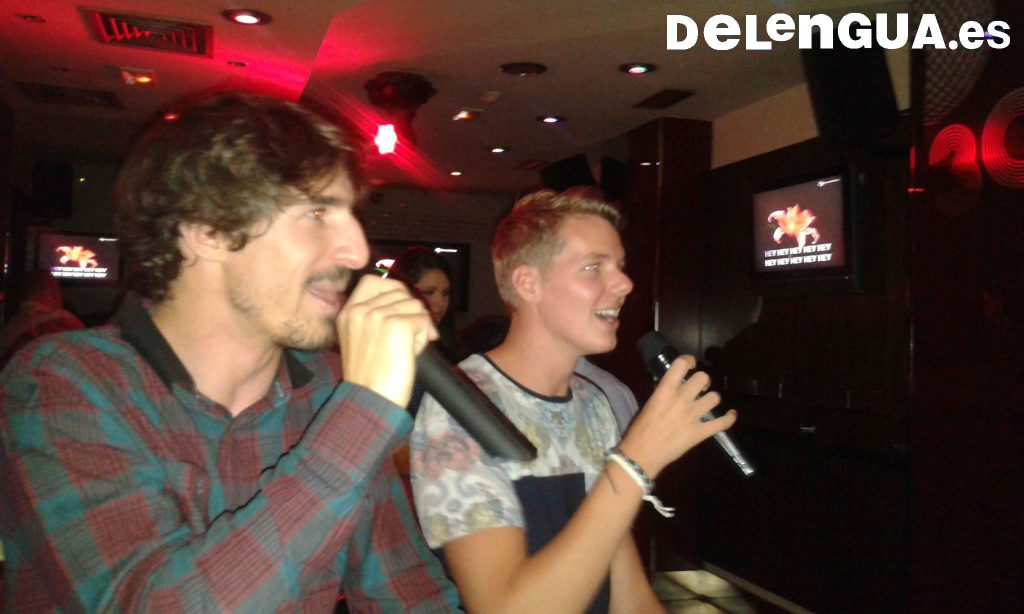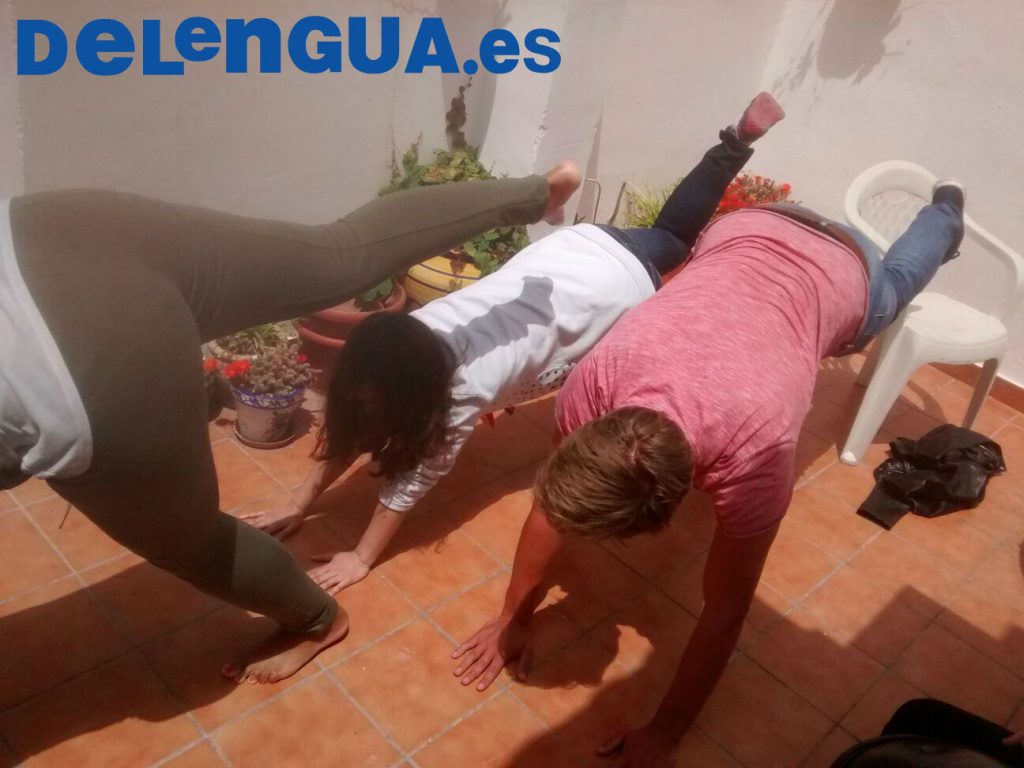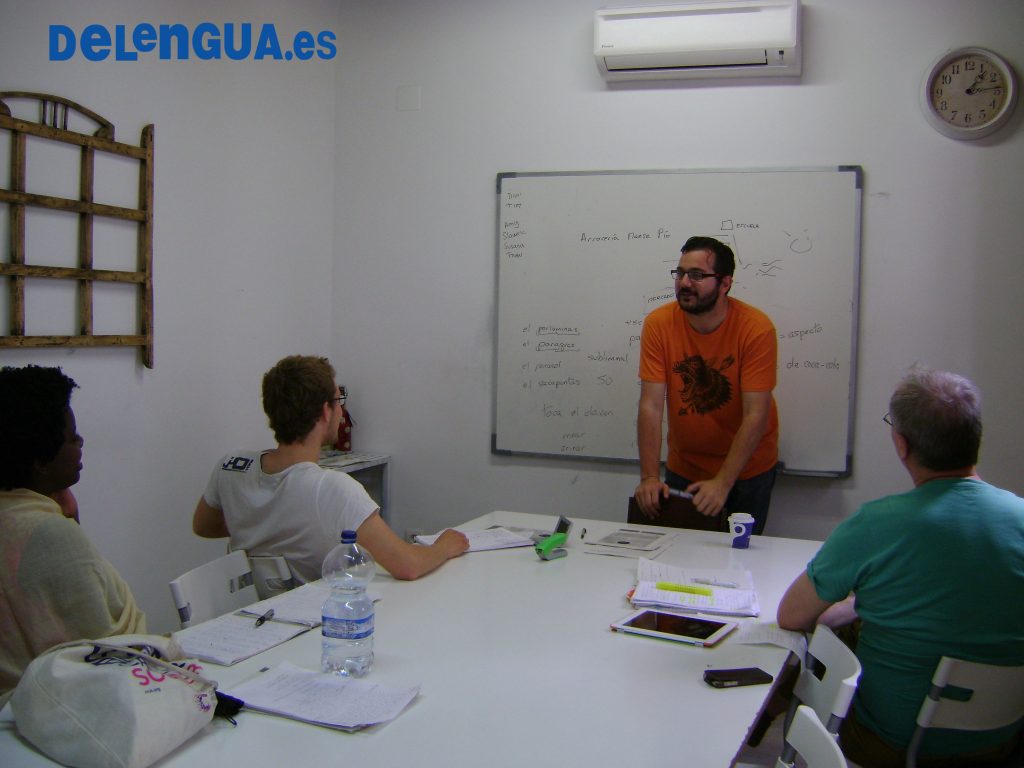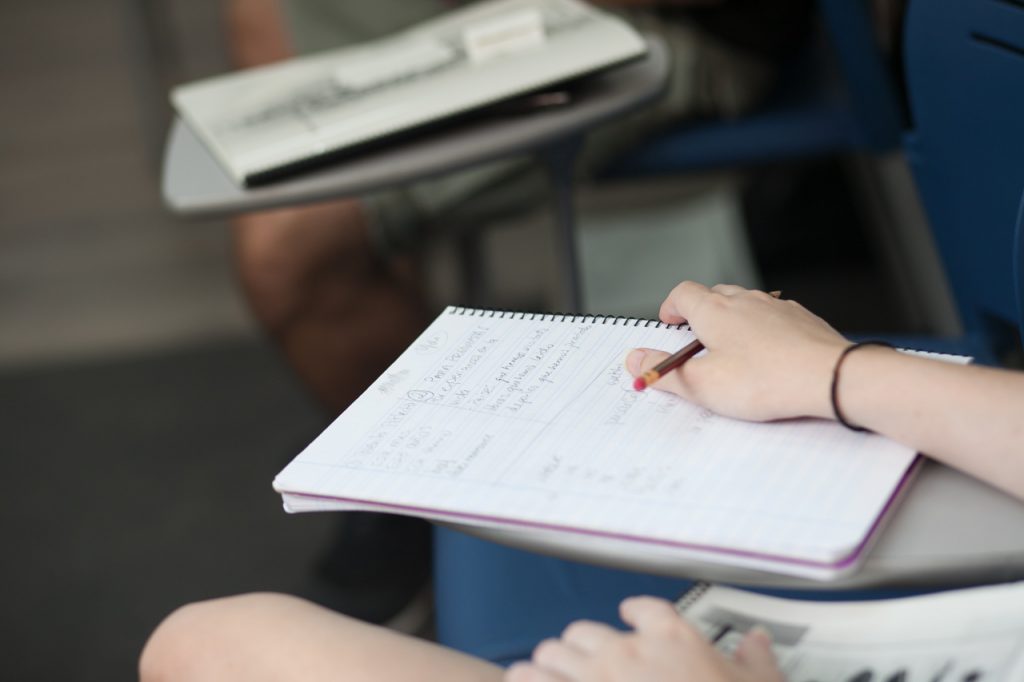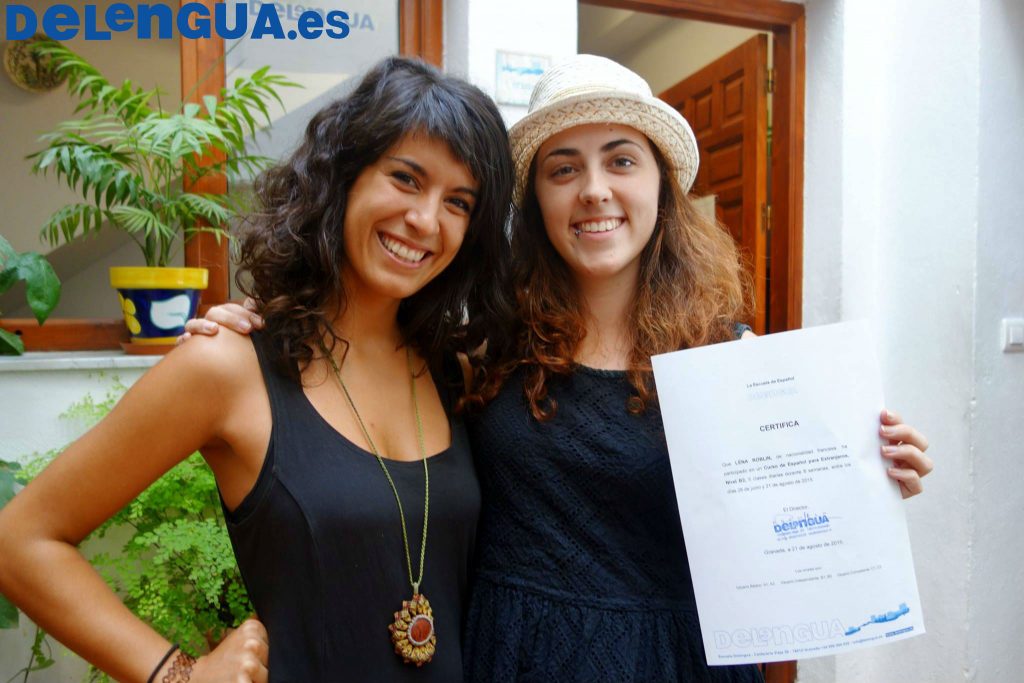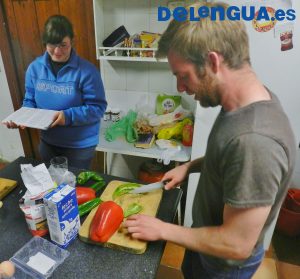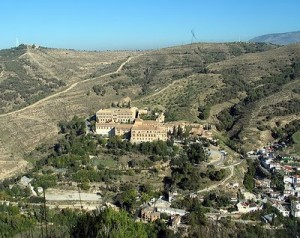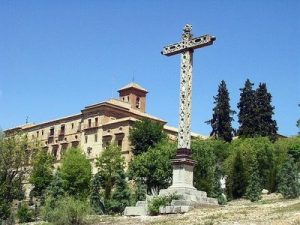| Español | Inglés | |
|---|---|---|
| La Abadía del Sacromonte, sita al Noreste de la ciudad de Granada, se denomina el Valle de Sacromonte. Se sitúa en el cumbre del Monte Valparaíso al final del camino de las siete cuestas. El 15 de marzo de 1594, dos hombres estaban buscando tesoro, y dice que hallaron unas placas de plomo dentro de una cueva. Estaban escritas en árabe y relataban el martirio de San Tesifón. El Arzobispo encargó más excavaciones, y entonces se encontraron más placas que describían el martirio de San Cecilio, ejecutado durante el reino de Nerón durante el siglo III, de San Tesifón y San Hiscio. Durante las excavaciones encontraron también un horno y unas cenizas. El 6 de junio de 1598, se construyó una casa para guardar las reliquias, y en 1600 empezó la construcción de una colegiata. Se estableció una fundación para la abadía con un abad y 20 canónigos. El símbolo de esta fundación era la Estrella de Salomón que todavía se puede ver por toda la abadía. En 1610, se paro la construcción cuando el arzobispo se mudó a Sevilla, aunque solamente habían construido el patio, la nave del sur, y la iglesia que existe hoy en día. Se puede ver los planes originales para la construcción que nunca se llevó a cabo en la biblioteca. Al principio del siglo 20, se realizaron más extensiones y hoy en día se puede ver el edificio con tres partes: la Abadía, el Seminario y la Colegiata.
En total, unos veinticinco libros plúmbeos fueron descubiertos. Se los mandaron a Madrid y después a Roma para su estudio, y se decidió que no eran auténticos y que deberían destruirse. Afortunadamente, no se destruyeron los libros, y en junio de 2000, fueron devueltos por fin a Granada. Escuela Delengua es una escuela de español en el centro de la ciudad de Granada, muy cerca del Sacromonte. Hay mucho que hacer y ver en la ciudad de Granada, ya que tiene tanta historia y es muy bonita. Escuela Delengua es un sitio ideal para aprender español y conocer la cultura española. |
The Sacromonte abbey, located in the northeast of the city of Granada, dominates the valley of Sacromonte. It is situated at the top of Mount Valparaíso at the end of the path of the seven bends. On the 15th March 1594, two men were looking for treasure and it is said that they found lead plaques inside a cave. They were written in Arabic and they recounted the martyrdom of San Tesifón. The Archbishop ordered more excavations and then they found more plaques that described the martyrdom of San Cecilio, executed during the reign of Nero in the 3rd century, of San Tesifón and San Hisco. During the excavations they also found an oven and some ashes. On the 6th June 1598, a house was built to guard the relics and in 1600 the construction of a collegiate church begun. The foundation was established for the abbey with an abbot and 20 canons. The symbol of this foundation was the star of Solomon that can still be seen throughout the abbey. In 1610 they stopped building when the Archbishop moved to Seville, although they had only built the patio, the southern nave and the church that exists today. The original plans of the construction that they never actually completed can be seen in the library. At the beginning of the 20th century they carried out more extentions and nowadays we can see the building with three parts: the abbey, the seminary and the collegiate church.
In total, some twenty five lead books were discovered. They were sent to Madrid and after to Rome to be studied and it was decided that they were not authentic and they should be destroyed. Fortunately they didn’t destroy the books and in June 2000 they were returned to Granada. Escuela Delengua is a Spanish language school in the centre of the city of Granada, not far from the Sacromonte. There is a lot to do and see in the city of Granada because it has so much history and is very beautiful. Escuela Delengua is an ideal place to learn Spanish and get to know the Spanish culture.
|
For more information visit our website:
Search
Archives
-
Recent Posts
Tags
activities Alhambra Andalucía Andalusia Aprende español en España Aprende español en Granada Cine Español cinema cultura Cursos de espanol en Granada Cursos de español Cursos de español en España Cursos de lengua Cursos de lengua en España Cursos de lengua en Granada Delengua activities España español fiesta film flamenco Gramática Española / Spanish Grammar Granada hiking in the Sierra Nevada la lengua española Language courses language courses in Granada language courses in Spain learn Spanish learn Spanish in Granada Learn Spanish in Spain Pedro Almodóvar senderismo en la Sierra Nevada Sierra Nevada Spain spanish Spanish Courses Spanishcourses in Granada Spanish courses in Granada Spanish Courses in Spain Spanishcourses in Spain Spanish Grammar Spanish Language School the Spanish grammar the Spanish Language




